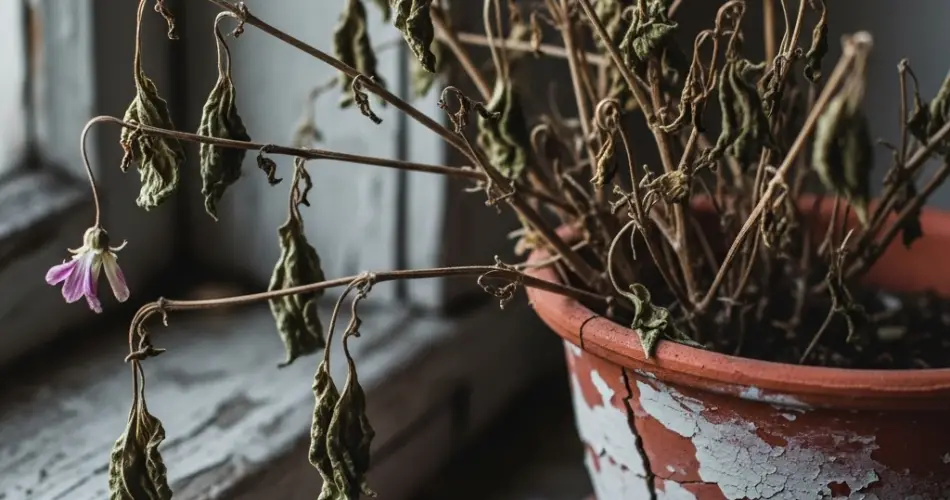It’s always disheartening to see a once-thriving plant withered, dry, and seemingly lifeless. Whether it’s from neglect, environmental stress, or overwatering, many people assume a shriveled plant is beyond saving. But before you throw it away, try this surprisingly effective and affordable method using just a couple of common pills and water.
This technique is especially helpful for reviving houseplants, balcony greenery, or garden favorites that have suffered from drought, heat, or root stress. With this easy at-home remedy, you can stimulate new root growth, rehydrate tissues, and bring life back to even the most tired-looking plant.
What You Need: Aspirin and Vitamin B1
The two key ingredients in this recovery method are:
-
Aspirin (acetylsalicylic acid) – known for its anti-inflammatory properties in humans, it also boosts plant immunity and stimulates systemic resistance to stress.
-
Vitamin B1 (thiamine) – a root and growth enhancer that helps plants recover from shock and encourages new cell development.
Combined, these pills can help restart biological activity in the roots, support cellular repair, and encourage the plant to take up water and nutrients again.
How Aspirin Helps Plants
Aspirin is derived from salicylic acid, a compound that plants naturally produce in small amounts to regulate growth and stress responses. When added to water, aspirin:
-
Triggers a plant’s natural defense mechanisms
-
Boosts resistance to drought, pests, and fungal infection
-
Enhances photosynthesis and nutrient absorption
-
Supports flower and fruit production in healthy plants
For damaged or abandoned plants, it acts like a health tonic that encourages them to “wake up” and fight back.
How Vitamin B1 Aids Recovery
Vitamin B1 is widely used by gardeners and horticulturists during transplanting because of its ability to:
-
Stimulate root formation
-
Reduce transplant shock
-
Help plants absorb nutrients more effectively
-
Revitalize weakened root systems
When a plant has been neglected, especially if the soil is dry or compacted, the roots often stop functioning. Vitamin B1 helps bring them back into action.
How to Prepare the Revival Solution
Ingredients:
-
1 Aspirin tablet (325 mg or similar)
-
1 Vitamin B1 tablet (100 mg)
-
1 liter (approx. 4 cups) of room-temperature water
-
A container or watering can
Instructions:
-
Crush the Pills: Use a spoon or a small bag to crush both tablets into powder.
-
Mix with Water: Pour the powder into 1 liter of water and stir until fully dissolved.
-
Water the Plant: Gently pour the solution directly at the base of the plant. Use just enough to moisten the soil well—don’t flood it.
-
Repeat (If Necessary): For very dry or completely withered plants, apply the solution once a week for 2–3 weeks. Avoid overdoing it—plants need time to recover.
Best Conditions for Recovery
After applying the solution, place the plant in a well-ventilated area with indirect sunlight. Bright but not harsh light is ideal while it recovers.
Also:
-
Trim dead leaves and stems to redirect energy to healthy parts.
-
Check the soil to ensure it drains well; repot if it’s too compacted or moldy.
-
Mist the leaves lightly with clean water to help improve humidity without overwatering.
What Plants Can This Help?
This revival method works best for:
-
Houseplants such as peace lilies, pothos, spider plants, and philodendrons
-
Balcony herbs and flowers like basil, mint, petunias, and geraniums
-
Outdoor potted plants affected by heat or drought
-
Recently transplanted seedlings or cuttings under stress
Succulents may benefit from the aspirin element but should receive less water overall.
Signs of Recovery
With proper care and a few doses of this solution, you may begin seeing signs of new life in as little as 5 to 10 days:
-
Softened or rehydrated stems
-
Emergence of new leaf buds
-
Greener, firmer leaves
-
Visible new roots near the soil surface
Don’t be discouraged if recovery takes longer—some plants take weeks to bounce back fully depending on how dry or stressed they were.
A Few Extra Tips
-
Avoid overwatering. This is one of the main reasons plants die, especially after stress. Let the soil dry slightly between waterings.
-
Use room-temperature water. Cold water can shock roots, especially in already stressed plants.
-
Combine with natural fertilizers like banana peel water or compost tea once the plant shows signs of recovery.
Conclusion
No need to give up on your dying plant just yet. With two simple pills and a bit of water, you can spark a powerful recovery process that helps even the most lifeless plant stand tall again. Whether it’s a forgotten windowsill pot or a sun-scorched patio flower, this method offers a second chance—and often, it’s all the plant really needs.
Try this once and you may never look at “dead” plants the same way again.



